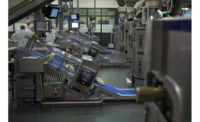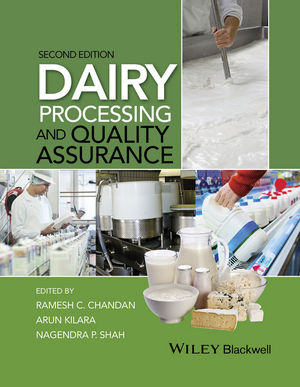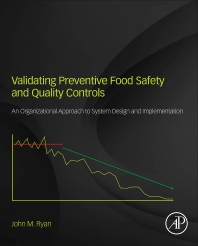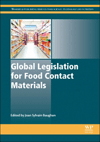Cheesemaker benefits from automation and inspection technology
Tasting, approving and signing every cheese batch to accompany these internal quality controls, several of their flagship processing plants now deploy the latest inspection and checkweighing technology from Fortress.
Written by Fortress Technology
With quality and taste as its defining values, the large-scale cheese specialist continues to uphold its legacy. Yet, its deployment of the latest automation and inspection technology means that as a supplier to over 60 countries and a supermarket-basket favorite, the firm is able to maintain its premium global brand integrity.
Processing an estimated 11-billion liters of dairy liquids annually, size hasn’t deterred this cheesemaker from staying true to their underlying values. Tasting, approving and signing every cheese batch to accompany these internal quality controls, several of their flagship processing plants now deploy the latest inspection and checkweighing technology from Fortress. In doing so, they ensure products are delivered to consumers and food service enterprises free of contaminants, as well as adhering to the latest Weights and Measures regulations.
Putting food safety first
Being premium cheese products, the ability to isolate each contamination event and reduce good product wastage was an attractive feature for this long-standing advocate of Fortress Metal Detection machines.
Located between the upstream packaging area and the secondary case loading section, five customized twin lane ‘Combination’ systems located in two plants solved the immediate challenge of inspecting cheese products tightly spaced together.
Receiving sliced, blocked, shredded and soft cheeses directly from the upstream dual-head bagger and flow wrapping packaging machines, the integrated Fortress system starts with a cleverly engineered and compact curving conveyor. Designed to ensure optimal spacing between lanes, the conveyor also helps to avoid congestion by spacing product lanes out evenly as they are fed into the individual, lane-specific metal detector aperture and checkweighing belt.
“One of the greatest challenges when checkweighing in fast-paced packing lines is making sure there is sufficient pitch from one pack to the next so that only one pack is present on the weigh conveyor at a time. This will ensure that packages are not rejected as unstable weight readings,” explains Fortress spokesperson Eric Garr.
Constructed to the highest food grade standards, the metal detector and checkweigher conveyor decks and belts are all designed to be easily removed from the machine for rapid deep sanitation and maintenance. In seconds and without tools, the plant operators can unclip and disconnect the conveyor motor, sanitize it, and instantly restore tracking once the conveyor is clipped back into place.
Double inspection capacity … Half the waste
The inspection machine consolidates a single Stealth metal detector uniquely divided into two compact apertures, plus two independent weight verification Raptor checkweighers. Each technology and lane has its own air blast reject mechanism to isolate metal contaminants and weight rejects. This helps to reduce and minimize quality cheese products being wasted by over 50 percent.
As each lane, metal detector aperture, checkweigher and reject is programed to run independently, interruptions are minimized during product switchovers or maintenance. Additionally, it is possible to run two different product lines, pack sizes or SKUs simultaneously on the adjacent conveyors.
One spokesperson at the cheese company commented: “The Raptor checkweigher integrated with metal detection has proven to be a great asset, giving valuable feedback and on-demand results. This helps us to create a clear target for production requirements. Additionally the multiple batch options allows for very precise tuning on each individual SKU.”
Metrological compliance
After inspecting the cheese packs for metal inclusions, good cheese packs – at 140 ppm per line - then pass over the Raptor digital checkweighing system. To comply with global Weights and Measures Regulations, in just milliseconds the in-motion, three-belt checkweigher weighs, analyzes, captures and reports data simultaneously.
Replicating the reject motion of the metal detectors, air nozzles blast out-of-tolerance products off the line into lockable bins, requiring minimal intervention from operators. Sophisticated software adds full transparency, with an average weight mode making instant reject decisions and combining the batch statistical data from across both lanes.
Products that pass both inspection tests then move onto a merging conveyor, aligning and presenting the packs to an automated downstream case packing system.
Holding food safety to the highest standard
For a GFSI-certified business with a continuous-improvement mindset, best practice robustness is of utmost importance to this dairy firm. The processing plant is equally dependent on automated and intelligent machinery to extract data for traceability and to support immediate quality control decision-making and production improvements.
Both the Stealth metal detector and Raptor checkweigher capture easy-to-read live OEE data. “By gathering live production information from each lane independently, a fast-paced dairy producer can establish the operational parameters and extract statistics that are most valuable to them,” notes Garr. Analyzed data includes volume, weight, inspection rates, rejects or downtime.
To assist with production transparency and reporting, the metal detectors are equipped data logging and come with Contact Reporter software to review the event log. Enabling the plant’s quality control team to export and convert time-stamped production data from their dual-aperture metal detectors and integrate it into readable formats aligned with their existing quality control reporting system.
For optimal reporting efficiency, the Raptor Checkweigher can also be connected to Fortress Technology’s Contact 4.0 software. Auditor-friendly, data reports can be exported as either PDF or Excel files covering a specific production line and/or time period.
Editor's Note: Due to the value that Fortress Technology places on relationships with its customers and the confidentiality of its operations, we respectfully are unable to name the cheese processor in this instance. The processor agreed to share its experience anonymously without revealing sensitive production information.
Photo courtesy of Fortress Technology.
Editor's note: This article was written by Fortress Tecnology with the intention to publish in Dairy Foods. All of the statements presented are that of Fortress and do not necessarily represent the views of Dairy Foods or its parent company BNP Media.
Looking for a reprint of this article?
From high-res PDFs to custom plaques, order your copy today!





.jpg?height=200&t=1681747050&width=200)


